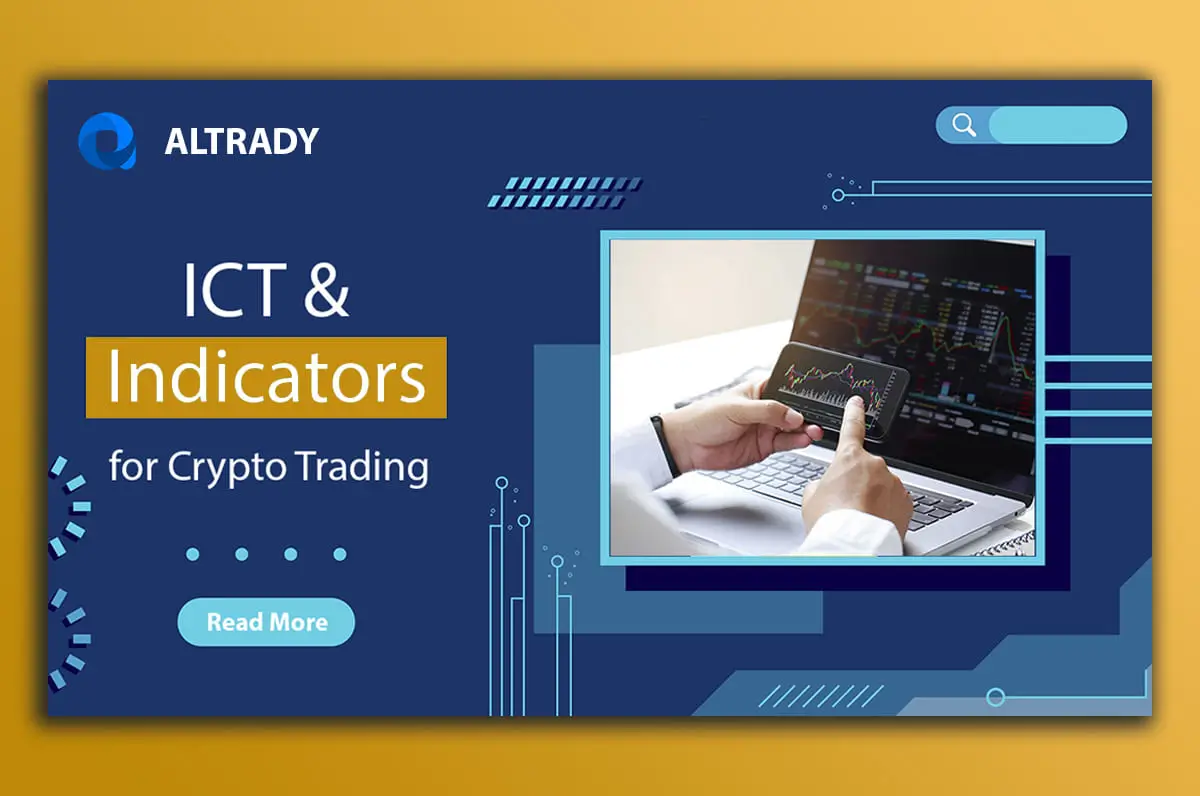Category List


ICT Indicators for Crypto Trading
Intro
Inner Circle Trading (ICT) is a trading strategy based on a methodical set of concepts that tries to make sense of the price movements and market structures of speculative instruments. Swing Points, Equal Lows/Highs, Fair Value Gaps, Discount and Premium Zones are some of the most popular concepts of this strategy.
ICT is a strategy known for its effectiveness in analyzing the market even though it does not rely on indicators; it looks for footprints left by institutional traders instead, being the “smart money concepts” key to putting Inner Circle Trading into practice.
Although ICT is a naked chart strategy, nothing impedes the integration of technical indicators as complementary tools. But which technical tools exactly can be the most effective? We will delve into the answer to that question.

The Inner Circle Trader Method and Key Concepts
ICT builds its basis on the assumption that large institutions "manipulate" the market with certain tactics to achieve their trading goals. This is an accepted idea because these institutions carry high amounts of capital that they cannot just throw into the market in one single order.
Their strength is also their weakness: they drive the market to certain zones or induce other participants to fall into the wrong operation to hunt stop-loss orders. The purpose? For them to get in or out of their big positions.
This institutional behavior is known as "smart money" and it is a repetitive one. The systematic approach of smart money traders leaves footprints in the market that can be analyzed for the best interest of retail and small-cap traders.
ICT methods and concepts provide a framework to spot and take advantage of those footprints. So where are those footprints? How to spot them? Let's point out some key concepts.
- Order Blocks: These are zones of large clustered orders, buy or sell, that can act as support or resistance levels in future price movements.
- FVGs (Fair Value Gaps): Specific areas of imbalance order flow that are expected to be filled later during a price retracement.
- Equal Lows/Highs: Areas where the price has reversed more than one time, suggesting a strong support or resistance level formation.
- Swing Points: These points are swing lows and swing highs commonly present in trends where the price does a pullback. For a swing high to be spotted, the price needs to do a higher high beyond a previous high. Conversely, for a swing low, the price needs to do a lower low beyond a previous low.

Institutional Traders Tactics
ICT aims for institutional traders' tactical moves to put its concepts into practice. Let's see some common tactics employed by institutions:
- False Breakouts: This is a manipulation action made at the top of a resistance or the bottom of a support level. It is characterized by a fast price move that triggers the liquidity of the zone and induces new participants into bad positions hunting their stop-loss.
- Distribution/Accumulation: These are phases in the market where large traders act in gradual selling activity for the distribution side or buying activity for the accumulation side. Typically these phases precede orders block formations.
How To Use ICT Concepts With Technical Indicators
Now that we know the key concepts of ICT and have identified some tactics, we may wonder what indicators can be used as complementary tools and how to use them.
Before delving into indicator selection, it would be useful to make a special mention of price action analysis which is a general trading concept on which ICT strategy relies a lot. We will also overview the concepts of liquidity and timeframes.
Analysis of Price Action
ICT prioritizes price action analysis using the market structure and its levels as key price areas, where candlestick and chart patterns will help identify swing points and support and resistance zones, understanding the psychology and behavior behind such price action.
Liquidity Levels
Liquidity refers to price levels in the chart where large orders are placed, giving these levels a special role making them crucial for identifying potential price continuations or reversals.
Timeframes Integration
The ICT strategy uses different timeframe analyses to comprehend the overall market conditions. Weekly and daily charts help understand market trends; lower timeframes like the 4-hour and 1-hour charts help to find opportunities for precise entry and exit points for short-term and day trading sessions.

What technical indicators can be used with ICT concepts?
Since ICT focuses on price action and market structures, as we noted, the best technical indicators covering specific price information are the ones we're looking to integrate, like the following:
- Moving Averages, exponential and simple.
- Volume, and its variants like Volume RSI, On-Balance Volume (OBV), and Volume Price Trend (VPT).
- Relative Strength Index (RSI).
- Fibonacci Retracements.
Let's see a comparative table exposing the possible usability of leveraging the confluence of technical indicators with ICT.
| Indicator | ICT context | Indicator Context | Timeframe and Usability |
|---|---|---|---|
| Volume | false breakout (manipulation) spotted | Increasing volume activity | 1h timeframe price action is touching a support level; 15-min to 5-min timeframes spot candlestick patterns reversing from that |
| level. This is a selling opportunity | |||
| RSI | Swing high detected | Price divergence | Market is in a downtrend, 30-min timegrame is reversing from a relevant point, 10 to 5 min timegrames show a higher high while RSI is making a lower high: a divergence This is a continuation signal on the direction of the trend. |

Conclusion And Risk Management Considerations
As we have learned, even though ICT is a strategy that does not depend on indicators, the technical approach can serve as a complementary tool to confirm and level up the reliance on ICT concepts.
However, any strategy or indicator is not a guarantee for success in crypto trading. Consider building a trading plan and a strong discipline, backtest strategies before going live and prioritize the use of smart trading tools like stop-loss with take-profit orders to protect your trades.
Call to action
Altrady's is a recommended starting platform to backtest and take advantage of smart trading and charting tools. You can Sign Up for FREE now and start paper trading ICT concepts.





























